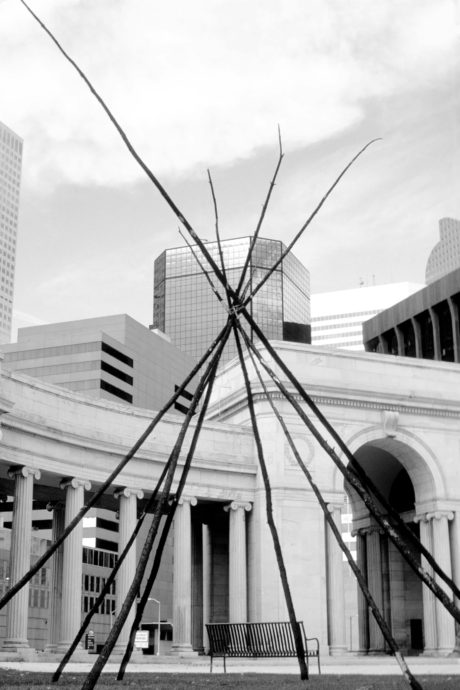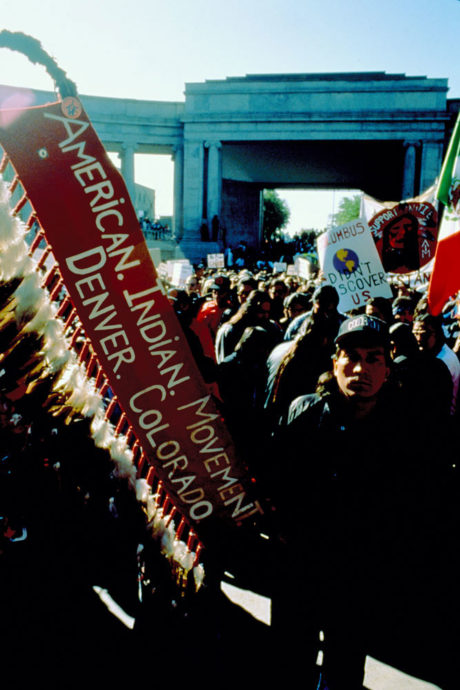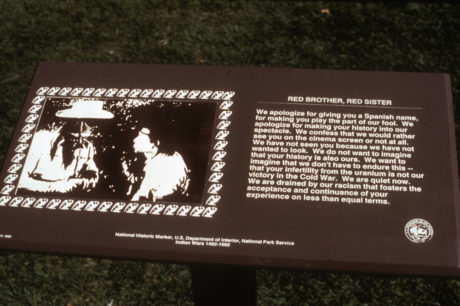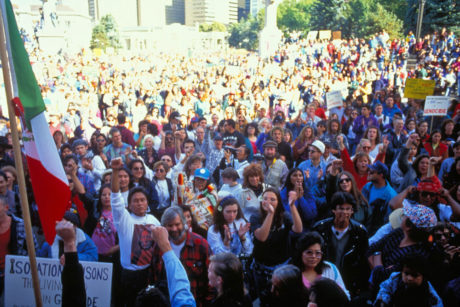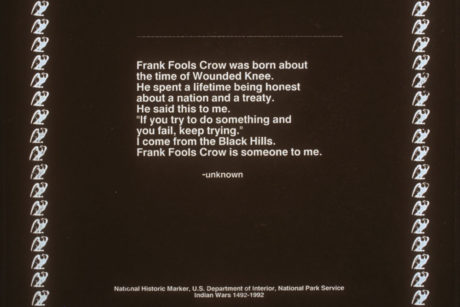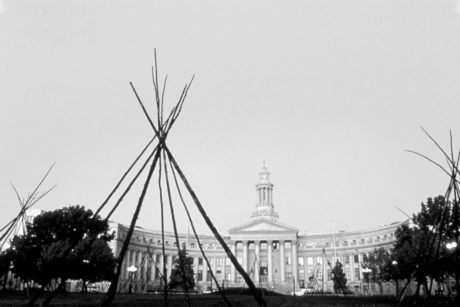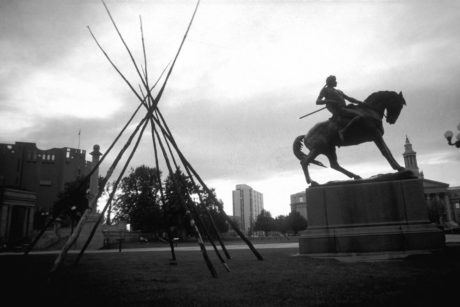On the occasion of the 500th Anniversary of Crístobal Colón encountering the Taíno people at Guanahani, one hundred charred tipi skeletal frames (brought from the Black Hills of South Dakota) and over thirty historic markers were placed alongside the City and County Building and State Capitol in Civic Center Park in downtown Denver, Colorado, from October 10-12, 1992.
The placement of the tipis along the planned Columbus Day Parade route made visible a history largely unseen of betrayal and atrocity. This oppositional narrative of burnt skeletal tipis proved too stark of an image in the landscape, and together with the thousands of people gathered on October 12 to protest, the parade was ultimately cancelled. At the time I stated, “Our imagination proved stronger than theirs.”
The Quincentenary Project was a collaboration with Dave Greenlund, the American Indian Movement of Colorado, and the Fourth World Center for the Study of Indigenous Law and Politics at the University of Colorado at Denver. Funding provided by the Chinook Fund.
“There’s a little matter of genocide that’s got to be taken into account right here at home. I’m talking about the genocide which has been perpetrated against American Indians, a genocide that began the instant the first of Europe’s boat people washed up on the beach of Turtle Island, a genocide that’s continuing right now, at this moment.”
– Russell Means, American Indian Movement on October 12, 1992, speaking prior to the cancellation of the Columbus parade.
